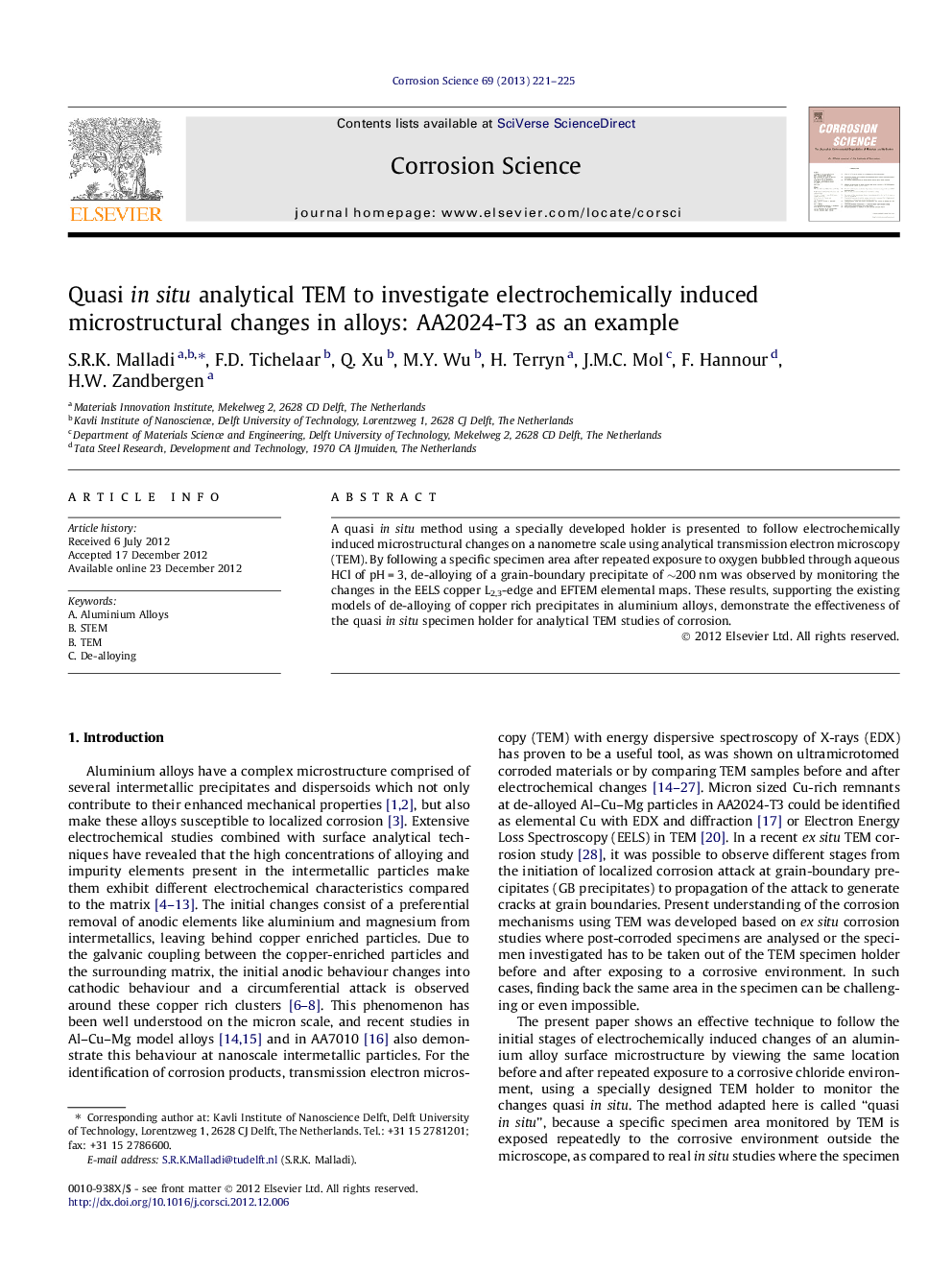| Article ID | Journal | Published Year | Pages | File Type |
|---|---|---|---|---|
| 1469259 | Corrosion Science | 2013 | 5 Pages |
A quasi in situ method using a specially developed holder is presented to follow electrochemically induced microstructural changes on a nanometre scale using analytical transmission electron microscopy (TEM). By following a specific specimen area after repeated exposure to oxygen bubbled through aqueous HCl of pH = 3, de-alloying of a grain-boundary precipitate of ∼200 nm was observed by monitoring the changes in the EELS copper L2,3-edge and EFTEM elemental maps. These results, supporting the existing models of de-alloying of copper rich precipitates in aluminium alloys, demonstrate the effectiveness of the quasi in situ specimen holder for analytical TEM studies of corrosion.
► Electrochemical changes are studied quasi in situ using analytical TEM. ► Initiation of an electrochemical attack on a nanoscale is investigated in AA2024. ► De-alloying of a Cu-rich precipitates studied in a HCl/O2 environment. ► Specially developed TEM holder guarantees the accuracy of the quasi in situ study. ► This method can be extended to study several surface reactions on a nanoscale.
